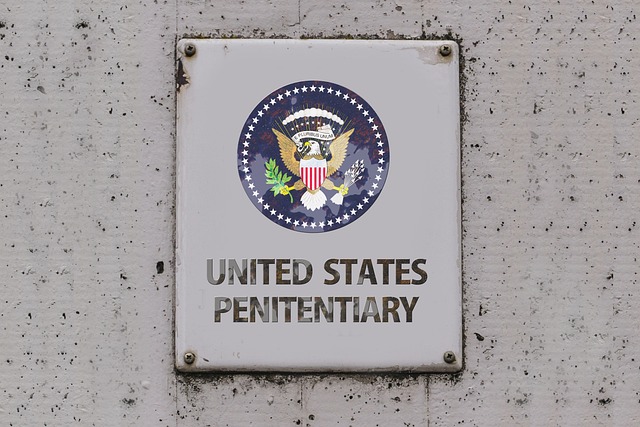Millennials (born 1980-1995) face distinct DUI risks compared to previous generations, with rural and lower-income Millennials at higher danger. Millennial DUI Awareness Campaigns leverage digital platforms, peer influence, and interactive content to educate young adults about the dangers of impaired driving, addressing unique tech-driven and social challenges. Combining education with proactive strategies like workshops, community events, and alternative transport options is key. Enforcement efforts should include strengthened laws, innovative policies, and data-driven targeting of high-risk areas to reduce recidivism rates among Millennials.
Millennial DUI rates remain a pressing concern, with trends revealing distinct patterns compared to older generations. This article delves into the unique challenges faced by young drivers, exploring key areas where loopholes and gaps exist in current enforcement strategies. We examine the impact of targeted awareness campaigns, pinpointing successful approaches that combine education, prevention, legal reforms, and community engagement. By understanding millennial DUI trends, we can develop effective solutions to enhance safety and close remaining gaps.
- Understanding Millennial DUI Trends: Unveiling the Discrepancies
- The Impact of Targeted Awareness Campaigns on Young Drivers
- Identifying Loopholes: Gaps in Current DUI Enforcement Strategies
- Enhancing Education and Prevention: A Holistic Approach for Millennials
- Legal Reform and Policy Changes to Address DUI Gaps
- Community Engagement and Support Systems for Millennial Drivers
Understanding Millennial DUI Trends: Unveiling the Discrepancies

Millennials, those born roughly between 1980 and 1995, have distinct behaviors and attitudes when it comes to driving under the influence (DUI) that set them apart from previous generations. Unlike their parents’ or grandparents’ eras, where DUI trends were more consistent across age groups, Millennials exhibit unique patterns that require tailored approaches for awareness campaigns. Recent studies reveal a concerning trend: while Millennial DUI rates have shown signs of improvement overall, disparities exist within this demographic, often driven by factors like socioeconomic status and geographic location.
These discrepancies underscore the need for targeted Millennial DUI Awareness Campaigns. For instance, research indicates higher DUI arrest rates among Millennials living in rural areas compared to their urban counterparts. Additionally, income levels play a significant role; lower-income Millennials are more likely to engage in risky driving behaviors due to increased stress and limited access to transportation alternatives. Understanding these trends is crucial for crafting effective campaigns that resonate with Millennials, ultimately reducing DUI incidents within this vital age group.
The Impact of Targeted Awareness Campaigns on Young Drivers

Millennial drivers, aged between 18 and 34, often face unique challenges when it comes to road safety. This demographic is known for their reliance on technology and a tendency to engage in risky behaviors behind the wheel. Targeted awareness campaigns have emerged as a powerful tool to combat these issues. These campaigns leverage social media platforms, peer influence, and personalized messaging to capture the attention of young drivers. By focusing on real-life stories, statistics, and the potential consequences of impaired or distracted driving, these initiatives aim to change behavior and save lives.
DUI (Driving Under the Influence) awareness campaigns specifically designed for Millennials have shown promising results. They often include interactive elements, such as online quizzes, videos, and challenges, making the learning experience engaging and memorable. This approach helps dispel myths about drinking and driving and encourages young people to make safer choices. Additionally, these campaigns can foster a sense of community among peers, where sharing experiences and supporting each other’s safe driving habits becomes an accepted norm.
Identifying Loopholes: Gaps in Current DUI Enforcement Strategies

Gaps exist in current DUI (Driving Under the Influence) enforcement strategies, revealing areas where Millennial DUI Awareness Campaigns can fill crucial voids. One significant loophole is the lack of targeted interventions for younger drivers, who often face unique challenges and risks behind the wheel. Current campaigns may not adequately reach Millennials due to evolving social norms and technological distractions, leading to a disconnect in awareness and prevention efforts.
Additionally, enforcement practices sometimes struggle to keep pace with changing substance use patterns among young adults. As new substances gain popularity, traditional DUI strategies might not be as effective in identifying and addressing these emerging trends. Targeting these gaps through tailored Millennial-focused initiatives can enhance overall DUI prevention and safety measures, ensuring that awareness campaigns remain relevant and impactful in the digital age.
Enhancing Education and Prevention: A Holistic Approach for Millennials

Millennials, born between 1981 and 1996, face unique challenges when it comes to preventing and mitigating the effects of DUI (Driving Under the Influence). To effectively address this issue, a holistic approach is necessary that combines enhanced education with proactive prevention strategies. By integrating Millennial DUI Awareness Campaigns, we can create a culture of responsibility and safety. These campaigns should leverage digital platforms and social media to reach young adults where they are most active, using engaging content and relatable messaging to drive home the severity of DUI’s consequences.
Education plays a pivotal role in empowering Millennials to make responsible decisions behind the wheel. Incorporating interactive workshops, community seminars, and peer-to-peer learning opportunities can significantly raise awareness about the risks associated with drinking and driving. Additionally, providing practical alternatives, such as designated drivers, ride-sharing services, or public transportation information, equips young adults with tools to enjoy social events without compromising their safety or that of others on the road.
Legal Reform and Policy Changes to Address DUI Gaps

To address the persistent gaps in DUI enforcement, legal reforms and policy changes are crucial. One effective strategy involves enhancing laws and regulations to close loopholes that have historically allowed offenders to evade consequences. This includes strengthening field sobriety tests, lowering blood alcohol limits, and implementing stricter penalties for repeat offenses. Additionally, Millennial DUI Awareness Campaigns can play a pivotal role in educating young adults about the dangers of impaired driving. These campaigns leverage digital platforms and social media to reach a wider audience, promoting responsible drinking habits and increasing awareness of the legal repercussions associated with DUI.
Policy makers are also introducing innovative measures like implementing ignition interlock devices (IID) as a mandatory condition for license reinstatement after a DUI conviction. This technology prevents vehicles from starting if the driver has a detectable blood alcohol level, significantly reducing recidivism rates. Furthermore, data-driven strategies that track and analyze DUI trends can help law enforcement agencies target high-risk areas and times, thereby enhancing overall enforcement efforts.
Community Engagement and Support Systems for Millennial Drivers

Millennials, born between 1981 and 1996, are a generation that has grown up with technology and constant connectivity. This digital nativity influences their driving habits and behaviors in unique ways. Engaging this demographic requires tailored approaches to promote safe driving practices, especially when addressing issues like DUI (Driving Under the Influence). Community-focused initiatives and support systems can significantly impact Millennial drivers’ awareness and responsible decision-making.
Millennial DUI Awareness Campaigns can leverage social media platforms, peer-to-peer education, and local community events to reach this generation effectively. By fostering open conversations about the risks and consequences of impaired driving, these campaigns can create a sense of shared responsibility within communities. Additionally, support systems like mentorship programs and peer support groups encourage Millennial drivers to learn from one another, share experiences, and develop strategies to resist peer pressure and make safe choices behind the wheel.
Millennial DUI trends reveal critical gaps in enforcement, education, and policy. By identifying loopholes through targeted awareness campaigns, enhancing educational efforts, implementing legal reforms, and fostering community engagement, we can create a safer future for young drivers. Integrating these comprehensive strategies is essential to address the unique challenges faced by millennials and significantly reduce DUI incidents among this demographic. This multi-faceted approach ensures that Millennial DUI Awareness Campaigns are not just informative but transformative, ultimately saving lives and shaping a more responsible driving culture.






